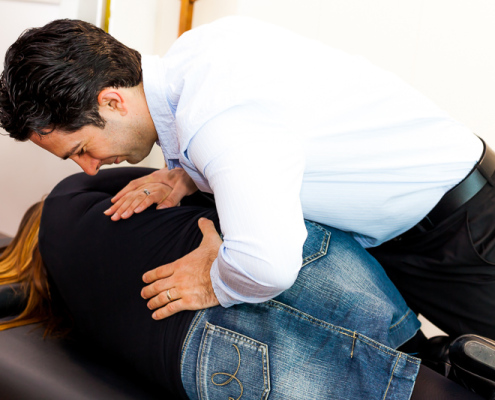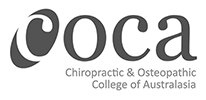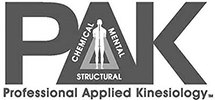I have completed the three year Paediatric diplomate program with the International Chiropractic Association (ICA).
Applied Kinesiology
Applied Kinesiology is a muscle testing technique that uses the reflexes of the nervous system that link your muscles, joints and organs in order to analyse how well your body is functioning. These reflexes can show up as muscle weakness or joint irritations and can alter your posture without you even realising it. They can occur from physical trauma, environmental toxins and emotional stressors. These stressors can show up as symptoms in the body and cause aches, pains or other dysfunctions.
Applied Kinesiology is a Chiropractic technique that uses muscle testing to assess the condition of your body to determine the underlying causes of your symptoms.
Consider your nervous system as the wiring of your house. When there is a fault or an appliance is not working correctly, the safety switch is activated to notify you of the fault and avoid further, more serious damage being done. So too, your body activates a series of symptoms to signify that something is not working optimally, or is heading towards a breakdown.
Applied Kinesiology analyses the messages generated by your body and nervous system through a series of muscle tests. This information, allows us to get to the root of the problem and correct any underlying causes.
Chiropractic Paediatrics
Many parents decide to take their babies and children to a Chiropractor in order to avoid similar problems to that which they have experienced.
As our children learn to crawl, walk and run, these physical stressors can cause a subluxation, adding pressure on the nervous system.
While all registered Chiropractors are qualified and registered to treat babies and infants, some Chiropractors decide to complete a further three years (320+ hour) study program to receive a ‘diplomate’ qualification. This will show as either DICCP or DACCP after the doctor’s name.
Since qualifying as a Chiropractor, I have undertaken further study in the following techniques and disciplines:
- Three year Paediatric diplomate program – International Chiropractic Association (ICA). – http://www.icapediatrics.com/members-postgrad.php
- Webster Technique – International Chiropractic Paediatric Association (ICPA). – http://icpa4kids.com/about/webster_technique.htm
- Fertility and Pregnancy series seminars – Visceral Biomechanics.
- This technique looks for biomechanical distortions of your reproductive organs.
- It also looks at problematic distortions caused by restricted space during your pregnancy.
Visceral Biomechanics
As we bend, move and breathe, our organs are physically compressed and are gently moved in a homeostatic or well-balanced motion. If you undergo a trauma or have repetitive strain from everyday life, you can have lax or loose fascia (soft tissue). This usually holds your organs in position, however, when loose can lead to a misplaced or subluxated organ. This trauma can create the abnormal motion of an organ and can lead to an altered nerve and/or blood supply that may lead to musculoskeletal pain.
Visceral Biomechanics is a technique that gently relieves the tension around your subluxated organ. This may assist in the reduction of your musculoskeletal symptoms.








